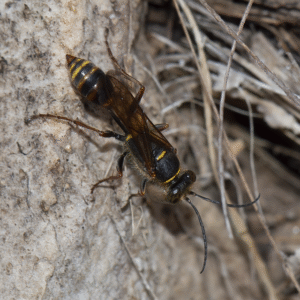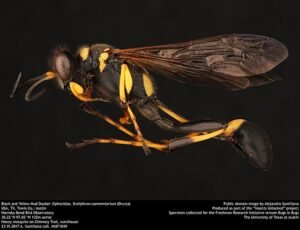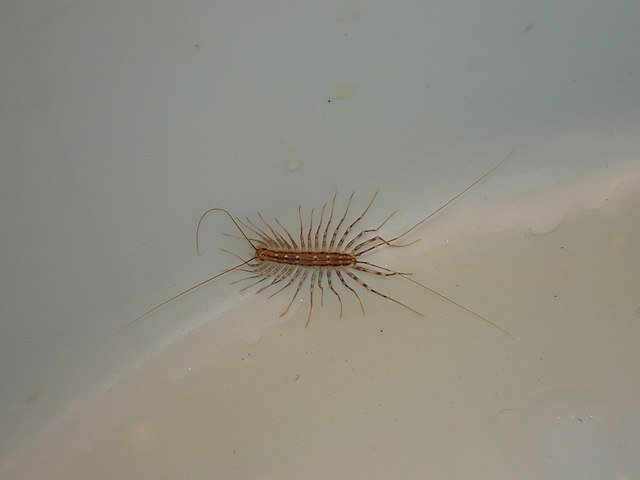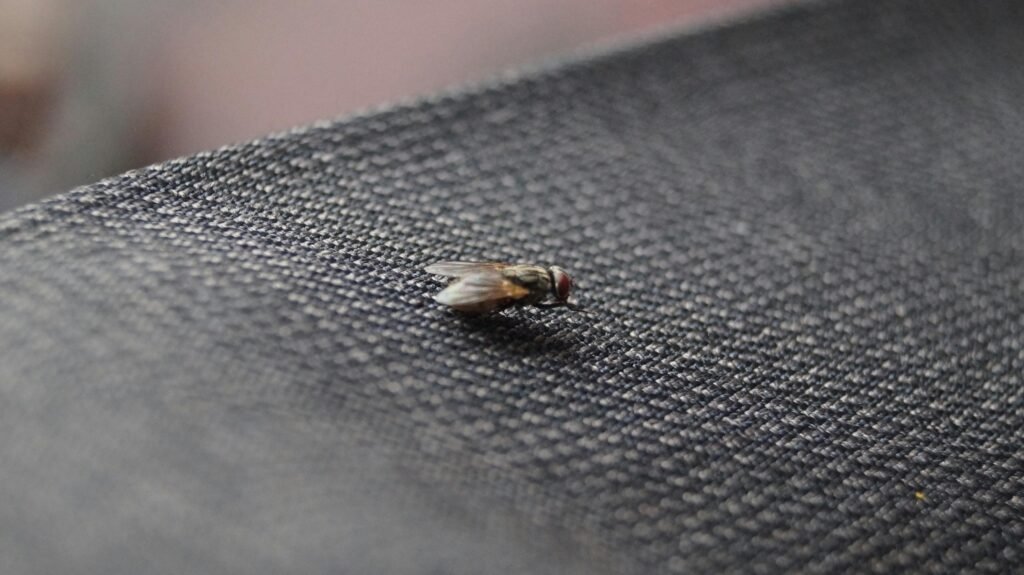Mud Dauber Wasps: Identification, Biology, Risks, and Control
 The mud dauber wasp is one of the most easily recognized solitary wasps. Belonging to families such as Sphecidae and Crabronidae, these insects are known for constructing nests made of mud. While social wasps like the yellowjacket (Vespula spp.) or the paper wasp (Polistes spp.) are aggressive defenders of colonies, mud daubers are generally docile and rarely sting unless provoked.
The mud dauber wasp is one of the most easily recognized solitary wasps. Belonging to families such as Sphecidae and Crabronidae, these insects are known for constructing nests made of mud. While social wasps like the yellowjacket (Vespula spp.) or the paper wasp (Polistes spp.) are aggressive defenders of colonies, mud daubers are generally docile and rarely sting unless provoked.
Their role in ecosystems is both beneficial and fascinating. They prey on spiders and other small arthropods, acting as natural pest control. However, their nests can cause nuisance problems around homes, barns, and even airplanes, where blocked ventilation systems have raised safety concerns. Understanding mud daubers is crucial for balancing appreciation of their ecological role with safe management.
Identification
Mud dauber wasps are easy to distinguish from other wasps if you know what to look for.
Size: Adults range from 12–25 mm in length.
Color: Varies by species. Sceliphron caementarium is black with yellow markings, while Chalybion californicum is metallic blue-black.
Body shape: Long, slender with a distinctive “thread-waist” (narrow petiole connecting thorax and abdomen).
Wings: Transparent to dark-tinted, folded lengthwise when at rest.
Nests: Mud tubes or cells attached to walls, ceilings, rocks, or equipment.
Unlike aggressive wasps, mud daubers are often seen flying slowly around structures, carrying balls of mud or paralyzed prey.
Biology and Ecology
Nest building
Females collect mud and shape it into tubular cells or organ-pipe-like structures.
Each cell is provisioned with paralyzed spiders, sealed, and left with a single egg.
Emerging larvae consume prey, pupate, and later emerge as adults.
Feeding habits
Adults consume nectar, honeydew, and occasionally body fluids from prey.
Larvae feed exclusively on paralyzed spiders stored in their cells.
Targeted prey often includes orb-weaver spiders, jumping spiders, and crab spiders.
Behavior
Solitary lifestyle; each female builds her own nest.
Rarely aggressive; they do not defend nests like hornets or yellowjackets.
Lifecycle synchronized with warm months, with one or two generations per year depending on climate.
Ecological role
Mud daubers regulate spider populations and contribute to pollination by visiting flowers. They also provide food for predators such as birds and larger wasps.
Global Distribution
 Mud dauber wasps are found worldwide, particularly in temperate and tropical climates.
Mud dauber wasps are found worldwide, particularly in temperate and tropical climates.
North America: Common across the U.S. and Canada, especially in warm regions.
Europe: Several Sceliphron species occur naturally or have been introduced.
Asia: Diverse populations across India, China, and Southeast Asia.
Australia: Native mud dauber species thrive in warm, semi-arid areas.
Africa and South America: Abundant diversity, often adapted to specific climates.
Their global success comes from adaptability in nesting sites. Human structures provide excellent surfaces for mud nests.
Risks and Damage
Human and animal risks
Mud daubers rarely sting unless handled.
Stings cause mild pain, far less severe than those of hornets or fire ants (Solenopsis invicta).
Risk exists for allergic individuals, though attacks are uncommon.
Structural and mechanical damage
Mud nests deface walls, ceilings, and outdoor furniture.
In aviation, nests built inside pitot tubes (aircraft speed sensors) have caused accidents and forced costly inspections.
Nests may block vents, keyholes, or electrical conduits.
Indirect issues
Dead spiders left in nests may attract secondary pests.
Abandoned nests can harbor dermestid beetles and other scavengers.
Signs of Infestation
Mud nests: Cylindrical tubes or clumps attached to surfaces.
Spider remains: Presence of paralyzed or dried spiders near nests.
Slow-flying wasps: Adults observed carrying mud or prey to hidden corners.
Indoor activity: Wasps occasionally enter homes, especially unfinished basements or attics.
Because mud daubers are solitary, infestations typically involve multiple small nests rather than large colonies.
Control Methods
Prevention
Seal cracks, gaps, and holes where nests may be built.
Regularly clean eaves, sheds, and garages to discourage nest construction.
Install screens on vents and protect aircraft pitot tubes with covers.
Non-chemical control
Knock down inactive mud nests with a scraper or brush.
Encourage natural predators such as swallows and other insectivorous birds.
Reduce outdoor lighting that attracts spiders, which serve as prey for mud daubers.
Chemical control
Rarely necessary since mud daubers are beneficial.
Residual insecticides may be applied in high-risk environments (e.g., aircraft hangars).
Spot treatments can be used on active nests if wasps pose danger to occupants.
Advanced Approaches
Behavioral management: Using decoy nesting surfaces that can be easily removed.
Targeted biocontrol: Research explores pathogens that may regulate populations in sensitive industries like aviation.
Eco-friendly deterrents: Essential oils such as peppermint or clove oil may discourage nesting.
Smart monitoring: Drones and sensors used at airports to detect nest-building activity.
Most control strategies focus not on extermination, but on minimizing risks where mud daubers intersect with human activity.
Cultural and Historical Context
Mud dauber wasps appear in cultural references across the world:
In Native American folklore, mud daubers were admired for their persistence and architectural skill.
In rural Europe, they were sometimes associated with household luck, as their nests indicated dry, sheltered homes.
In modern aviation, mud daubers have become infamous for costly damages, especially in the United States and Australia.
Farmers often view them positively, as they reduce spider populations around barns and stables.
This dual reputation—beneficial predator and structural nuisance—shows how human perspectives on insects shift depending on context.
FAQ Section
Q1: Do mud dauber wasps sting humans?
Yes, but only rarely. They are non-aggressive and usually sting only if handled or trapped.
Q2: What do mud dauber wasps eat?
Adults feed on nectar and honeydew, while larvae consume spiders stored in mud cells.
Q3: Are mud daubers dangerous to pets?
Not typically. Pets may be stung if they disturb nests, but encounters are uncommon.
Q4: How long do mud dauber nests last?
Nests may remain for years if undisturbed, even after the wasps have left.
Q5: Can mud daubers damage airplanes?
Yes. Their nests in pitot tubes and vents are a known aviation hazard.
Q6: How do mud daubers differ from yellowjackets?
Mud daubers are solitary, non-aggressive, and build mud nests. Yellowjackets are social, aggressive, and nest in paper-like combs.
Q7: Do mud daubers control spider populations?
Yes. They are efficient predators of spiders, including black widows (Latrodectus spp.).
Q8: How can I safely remove a mud dauber nest?
Wait until winter when nests are inactive, then scrape them off. Wear gloves to avoid contact with old prey remains.
Final Thoughts
The mud dauber wasp is a unique insect that combines ecological benefits with occasional nuisance risks. Unlike aggressive social wasps, mud daubers rarely sting and are valuable natural controllers of spider populations. However, their mud nests can stain buildings, clutter barns, and in rare cases create serious hazards in aviation and mechanical systems.
For most homeowners, mud daubers are more ally than enemy. Simple preventive steps—such as sealing entry points, cleaning structures, and discouraging spiders—usually keep populations under control. In sensitive environments like airports or food facilities, targeted strategies are justified to minimize risks.
The future of mud dauber management lies not in eradication but in coexistence, using a mix of exclusion methods, eco-friendly deterrents, and awareness of their natural role in the ecosystem.
Disclaimer
This article is for informational purposes only. Pest control laws and approved chemicals vary by country. For best results and legal safety, we strongly recommend contacting a licensed pest control professional in your local area. Always make sure that the pest control technician is properly certified or licensed, depending on your country’s regulations. It’s important to confirm that they only use approved products and apply them exactly as instructed on the product label. In most places in Europe, UK, or USA, following label directions is not just best practice—it’s the law.
Author Bio
Nasos Iliopoulos
BSc Agronomist & Certified Pest Control Expert
Scientific Director – Advance Services (Athens, Greece)
Licensed Pest Control Business – Ministry of Rural Development & Food (GR)
References
Purdue Univerisity - Mud Daubers
Wikipedia - Mud dauber


